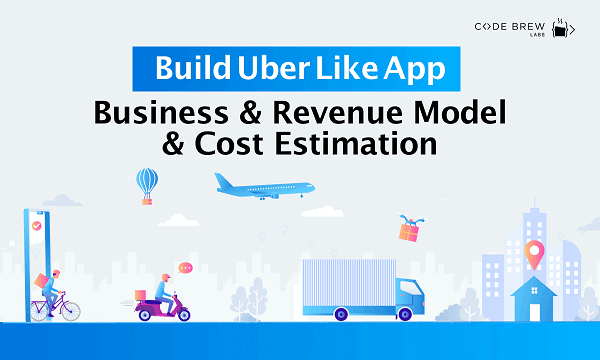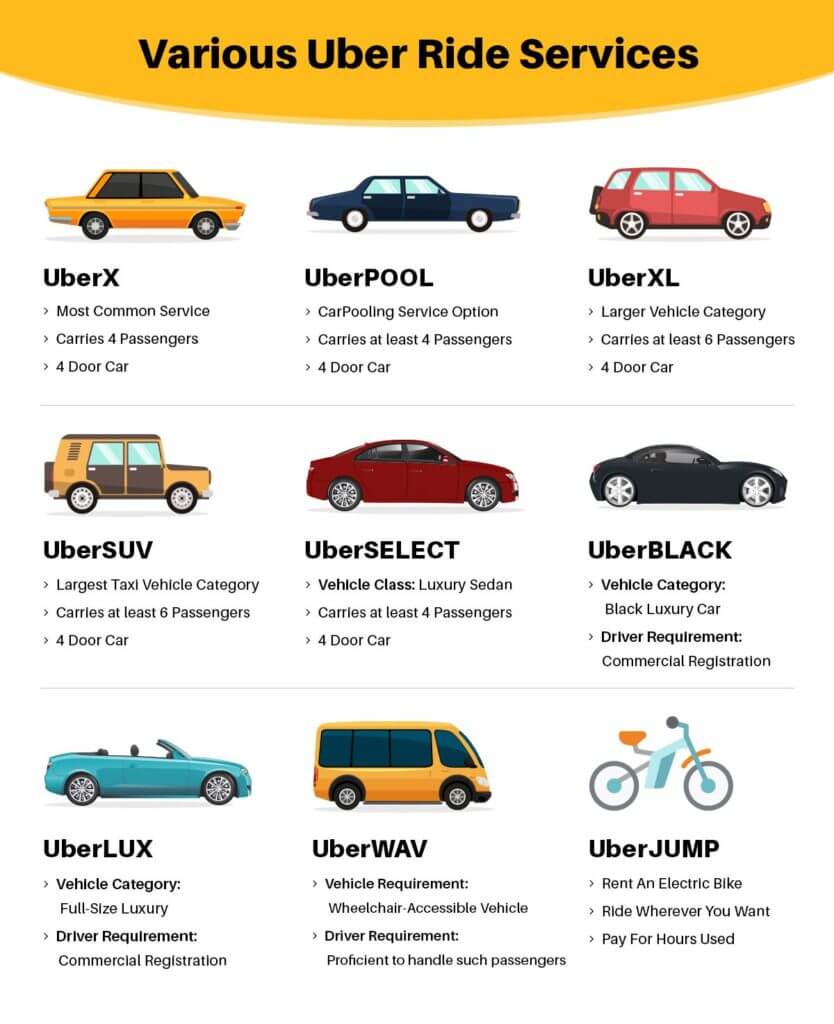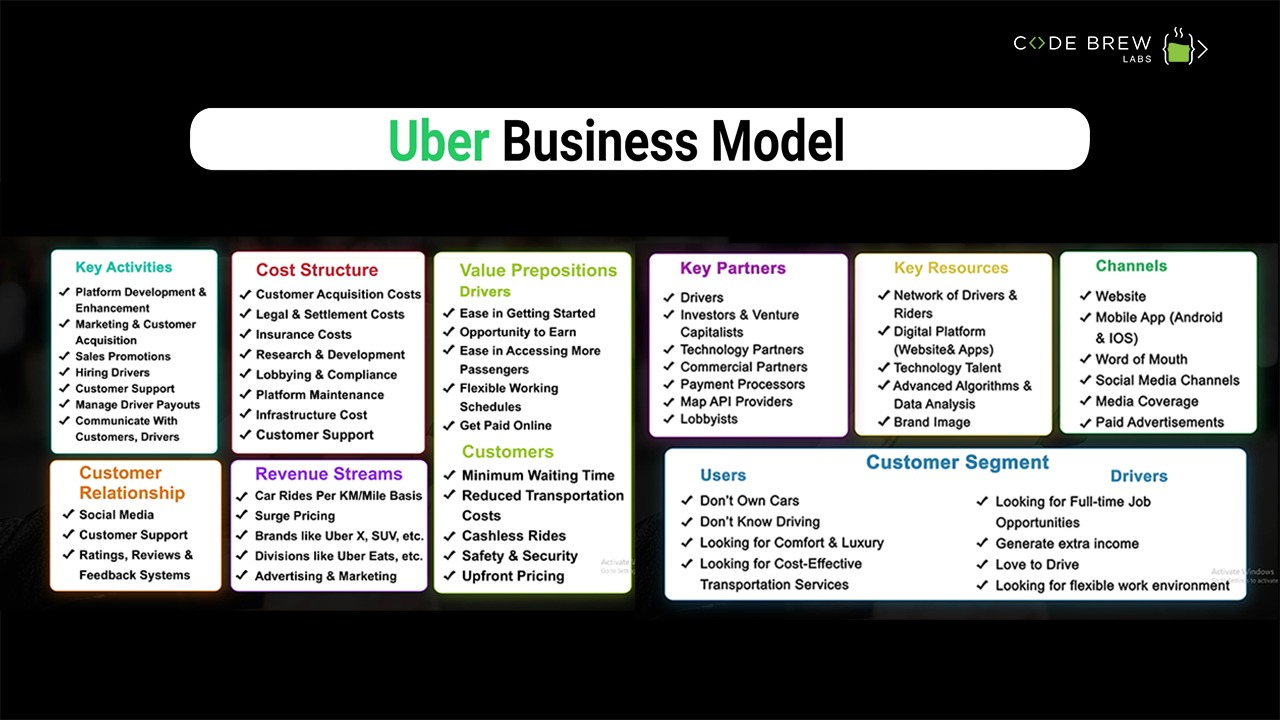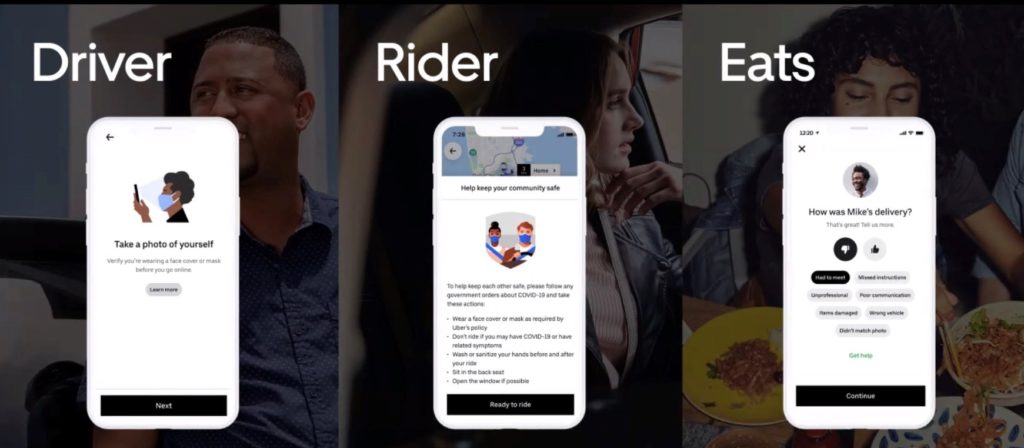
If it is about the most successful startups, Uber has definitely secured the first position. Operating in more than 85 countries, it has raised over $20.9 billion funding. Such whopping numbers have been inspiring business owners and entrepreneurs to make Uber like app.
Table of Content
Are you planning to create your own Uber like app? In that case, you have landed at the right place. Here you will get answers to all your questions that are related to launching Uber clone. Some of them are:
Before you dive deep into these, let’s first have a quick glance at Uber’s journey so far.
Back in 2010, Uber led to a revolution in the taxi market. Since its inception, there is no looking back for this ride hailing giant. Initially, it started as a transportation company with a number of experienced and licensed drivers, providing on-demand taxi services. The basic idea was to connect passengers with the drivers through a mobile application.
The idea to create Uber like app sneaked through the minds of founders -Travis Kalanick and Garrett Camp in 2008. While the initial prototype was built by Garett, the application went live in 2010. Back then build Uber like app was a challenging and time consuming task. However, today there are many mobile app development companies that can help you create apps like Uber within weeks.
In the initial days, the name was UberCab and the services included hailing a black luxury car. The name was changed from UberCab to Uber very soon. And here is a summary of Uber’s journey over the years.
In the present day, Uber is estimated to have over 100 million monthly active users. It is a unicorn valued at nearly $60 billion, providing enormous ride options, like:

Source: Pinterest
Uber was the first to introduce the concept of the aggregator business model. Being a unique business model then, it involved partners (drivers) working under their brand, rather than offering them individually. To put simply, Uber doesn’t own all the cars. It allows drivers to drive their own cabs, while working for Uber. So the actual service is provided by the partners. However, it is Uber that ensures the highest service standards are met.
Uber business model is a two faceted operating model. The first severely focuses on marketing Uber as a ride-hailing platform for the customers or passengers. It allows them to book a cab with a few taps on their smartphone. On the contrary, the second aspect focuses on having numerous cab partners on board. The aim is to deliver a seamless experience to the end consumer.

Uber’s business model is serving a huge customer segment, including people of all ages. To sum up, the different types of customers are:
The Uber app serves to be the first touch-point for the customers. They add the point A and point B details, choose ride options stating vehicle size, price, and estimated drop-off time, and confirm the pickup. The backbone of this offering is the application algorithm which informs the available drivers nearby about the request. It is up to them, if they accept or decline the same, as per their availability.
When a driver accepts the request, the passenger is notified about the driver details and the time it’ll take for him to reach the departure point. The value proposition for passengers are:
While the cab is owned and operated by the cab driver, Uber always ensures its branding and security. As stated above, the driver is notified for a ride request through an automated process. Once he accepts the request, he is provided the required details of passengers. Reaching the departure point, the driver verifies the riders name and the destination. The process is referred to as two-factor authentication, where a security pin is received by the rider. Here are the value propositions for drivers:
Just like every cab ride ends with passengers paying fare to the driver, Uber majorly has the same source of revenue. Wondering how come Uber has made those big funding and valuations? Actually, it is the number of rides and its expansion into other domains that separates Uber’s revenue model.
To answer – how Uber makes money, we have divided the Uber revenue model as below:

Below are listed popular verticals where Uber is outperforming;
Uber Eats: In the last year, Uber has been betting big on on-demand food delivery. Launched as a separate app in 2016, Uber Eats has witnessed an exponential growth rate. The app offers consumers flexibility to order from their favorite restaurants online. Meanwhile, Uber’s delivery partners (drivers) deliver the food to the customer’s doorstep. Not just it benefits the drivers and consumers, but the vendors registered with the platform.
Find out, how does Uber Eats make money?
Similar to Uber revenue model, Uber Eats makes money through three ways;
Uber Freight: Also referred to Uber for trucks, this on-demand trucking app was launched in 2017. It was meant to help shippers connect with the carriers. It is a business-oriented transportation service platform, providing customers a convenient way to handle transportation goods.
Uber Health: Partnered with various healthcare organizations, Uber Health provides different ride scheduling options to patients. In this, professionals in the healthcare industry can book rides for patients, offering access to adequate care on the way.
Uber Boat: This water-taxi service is popular in countries like Turkey, Istanbul, and Croatia. Simply, the users can book a boat or yacht online and travel through a water-body.
Uber Chopper: Similar to boat hiring services, Uber has also tied up with Airbus service. So this is a helicopter ride-service which is running in a limited number of cities for now.

Source: TechCrunch
The success of Uber business and revenue model has encouraged many entrepreneurs to build a similar business. For those planning to launch Uber clone, it becomes important to make out how it thrived during these years. Let’s analyze together;
Identifying Need: First thing comes first; Uber recognized a need and immediately acted upon it. Whether it is the need of hiring a cab or getting food delivered, they identified exactly what customers required.
Served Comfort & Convenience: Knowing what customers need, Uber worked on the root problems and resolved them. For example, when looking for a taxi, people were unsure of its long wait time, availability, uncertain fares, and other risks. Launching Uber app, they sorted all the problems and made it utmost convenient for the users.
Safety First: Making their users feel secure, Uber gained the trust of their customers. While travelling in a taxi, there was always a security concern. But adding features like real-time route tracking, GPS, SOS, etc. the risks and insecurity issues were resolved.
Timely Alerts & Suggestions: Addition of smart features like real-time notifications for taxi-request confirmation, arrival time, ETAs, cancellation, and others, kept users informed. On the other hand, optimized routes and in-app navigation helped avoid high-traffic areas and longer routes.
Digital Payments: Not only the Uber app makes it convenient to book a cab, but also added multiple payment gateways to enable easier digital payments.
Marketing & advertisements: Every new concept takes some time to become a part of people’s life. When Uber launched its first taxi service in San Francisco, they invested hugely in media advertisement campaigns. This fetched them immediate and wider popularity. In the same queue, they brought forth the concept of first free rides, discounts on fares, and more. Hence, they used their customers to play an active role in mouth publicity.
These were some of the key lessons for budding business owners from Uber business model analysis. Now let’s move toward another important question.
While there is no exact answer to this question, still you can ideate the figures by understanding the necessary cost components. Below are listed the leading factors that makes to Uber like app development:
The overall cost will greatly depend on the total hours required for the above stated factors. In all, it can take between 300- 500 hours to make Uber like app. Summarizing these factors, the total cost will also depend on the region you choose. For instance, in the USA, the rates are between $100-$200. But the same cost for Uber like app development is nearly $50 or $40 per hour in Asian countries. So, you can expect the approximate cost range somewhere around $25000 to $30000.
However, you can switch to cost-effective Uber like app development. How? It is possible with a reliable app development company like Code Brew. With years of experience and expertise in creating Uber like apps, we have the right solution to build your Uber clone.
Need an exact quote for your Uber like app? Or looking forward to creating an Uber clone with advanced features? Whatever your need is, we’ve got you covered. And now we are just a click away. Let’s connect now!
